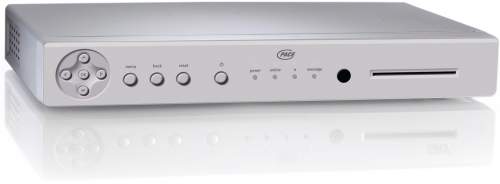
Calling all channels
By Kate Bulkley
Monday June 13, 2005
Dubbed the hottest product in television, IPTV took a huge step towards the mainstream last week. By Kate Bulkley

The days when telephone lines were used exclusively for talking to people outside of shouting distance are fading fast. Companies such as BT are spending billions upgrading the phone lines so they can provide access to the internet and, soon, so they can offer TV programmes as well.
The technology to turn the phone line into a TV delivery system is IPTV - television delivered over broadband internet lines to a set-top box that is attached to the TV set. There have been tests and smallish commercial rollouts of IPTV over the past decade (including a pioneering service at Kingston Communications in Hull), but making the sums add up has been difficult. The technology was expensive and the biggest phone companies were not that interested. But all that is about to change.
The biggest telephone companies in the world are feeling increased pressure as competition for their core voice-calling business has been eroded by alternative call providers, including cable companies and, more recently, internet calling companies such as Skype and Vonage, and by the rise in mobile-phone calling. "IPTV is the hottest product in the TV world," says Peter King, an analyst at Strategy Analytics. "The telcos realise they have to get into the business of providing video, either broadcast or video-on- demand (VoD)."
Over the past year, some of the world's biggest telcos have tested IPTV. And by the end of the year there will be hundreds of IPTV trials running around the world, including one on BT phone lines. Add to that several commercial IPTV businesses being run by alternative telcos, including Free in France and PCCW in Hong Kong, and what was a start-up business is starting to get some traction.
According to forecasts by Strategy Analytics, the number of IPTV set-top box subscribers will grow from less than two million in 2004 to 12 million by 2010. US-based Multimedia Research Group (MRG) is even more bullish, calculating that there will be 25m IPTV homes worldwide by 2008. All this activity has attracted the attention of companies from Microsoft to Pace Micro Technology, a maker of TV set-top boxes. Microsoft wants to extend its hold on software in PCs into the software for the IPTV television world, while Pace wants to leverage its know-how in developing satellite and cable TV set-top boxes into the IPTV market.
Last week, Pace launched a new IPTV set-top box that it hopes will outdo its main competitors, such as Thomson, Scientific Atlanta and Motorola. The new Pace box includes decoding software built into the box and a compression technology called MPEG-4 that means a telephone company can transmit high-quality TV pictures with only half the bandwidth previously required. The result is a set-top box that is more flexible and that will cost less than $100 (£55) to mass produce, according to Strategy Analytics, or less than half of what most IPTV set-tops cost today.
The new, cheaper box is important to the economics of the fledgling IPTV business and it is also crucial for Pace. "I see this set-top box as a mechanism for Pace to come back to what they are best at: innovation and R&D," says King, of Strategy Analytics. "They lost their way a few years ago but a lot has changed since then. This is a demonstration that they are coming back."
Pace is not betting its entire future on IPTV; in fact last month the company won a contract from the biggest US cable operator Comcast Corp, worth up to $550m over the next three years. "Our IPTV revenues are very small at the moment, but weexpect it to be a significant part in the next three years," says David Gilles, director of technology at Pace. Gilles admits that other set-top box makers will not be far behind with similar offerings but he says: "This box will position us very well for the future."
Pace is not the only UK set-top box maker eyeing the IPTV market. Amino Communications began shipping IPTV boxes in 2003 and has already supplied many of the alternative telcos in the US. The company is now seeing interest from so-called tier-one telcos such as Verizon and SBC Communications. "The level of interest from the tier-one telcos worldwide has turned around dramatically since last year," says Dave Cormie, spokesman for Amino Communications.
Although the telcos are the primary market for IPTV suppliers, some cable companies such as NTL are also experimenting with TV-channel delivery using IPTV rather than the more bandwidth-hungry standard broadcasts. And BT is expected to unveil its plans for delivering TV to consumers over the telephone line as early as this summer but it is still wrestling with decisions about which suppliers and systems to use. BT did not return calls for comment but it is understood that it will launch a set-top box that receives the Freeview channels and has a VoD service capability so customers can download TV programmes and films that they pay to watch.
One thing that is not clear is whether BT will be using Microsoft's software for its boxes. Late last month Swiss telco Swisscom delayed the launch of Microsoft-enabled IPTV set tops from the end of this year to 2006 because the technology was not ready. "For the telcos they have to get it right from launch," says Peter King. "The user interface has to be spot-on. So until BT and the Swisscom people are 100% comfortable with it they are not going to rush it to market. In the UK this is particularly important because there is already a lot of competition in the TV market from Sky and cable and Freeview. It's not like there is pent-up demand for IPTV. There aren't lots of people saying 'I want my IPTV' because they don't know what it is yet."